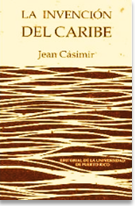 "SHADA’s Conception" by Jean Casimir, Ph.D.
"SHADA’s Conception" by Jean Casimir, Ph.D.
Casimir is Professor at l’Université d’état d’Haïti. He was once Haiti’s ambassador to the United States and the OAS. He has written numerous books, such as La Invención Caribe (1997), Ayiti toma, Haïti chérie (2000), and Pa bliye 1804 (2004).
President Elie Lescot (1941-1946) remains up to now the unequalled reformer of the economic structures of the country, the one who nearly succeeded in achieving economic development according to the role granted to Haiti by the world-wide decision-making centres. The external incentives for this development did not last long enough and Lescot could not complete his work.
During World War II, the United States found itself in a delicate position in relation to its traditional South Asian suppliers of certain strategic raw materials. Correspondingly, President Lescot delimited the agricultural zones of Haiti to be considered as strategic areas. Their production had to be reconverted to meet the urgent needs of the international community. In 1941, he took the necessary steps to create an agricultural enterprise called SHADA, Société Haïtiano-Américaine d’Exploitation Agricole. The SHADA was launched with a loan from the Export-Import Bank, as a Company in which the Haitian Government participated. It was granted the "monopoly" (read concession) on growing and exporting rubber over a 50-year period. The Council of the SHADA was put under the direction of the representative of the EXIMBANK, who, incidentally, was also a civil servant in the United States Department of Agriculture. The land acquired by the SHADA covered a total of 58,400 has., for the growing of rubber, and 75,000 has. for the exploitation of wooden construction material. Gérald Tinois estimated this total of 133,400 has. as equal to 21.55 percent of the agricultural land of the country.
Moreover, Reynolds Haitian Mines Inc. "was allowed to choose (within areas selected by the government) a number of lots not to exceed 150,000 hectares in the aggregate."
The government of Lescot facilitated also the development of some ventures initiated by previous régimes. The "monopoly" on banana exports was taken from the Standard Fruit Company and given to a relative of Lescot. To Henri Lescot, his son, was granted the "monopoly" of the internal trade in sisal, some privileges in the production of essential oils, and, with his partner, O.J. Brandt, exclusive control over the cotton market. Let it be noted that the same Brandt produced in a textile factory of his own, 11 percent of the national consumption of textiles. Besides, he owned a factory for vegetable oils and animal fats.
Therefore, during the Second World War, the state used all its political power to modernize and diversify agriculture, and to stimulate agro-industries. With dedication and perseverance, capitalist relations were introduced into the countryside. Together with this agricultural strategic development, the government of Lescot took several measures oriented toward the concentration of capital in commercial activities. The war years were the golden age of speculation and black market in goods of primary necessity. The government established, on the one hand, top prices and top margins for mercantile profits and froze the rent of urban houses while, on the other hand, it continued to grant "monopolies" to relatives and closely related friends of the President.